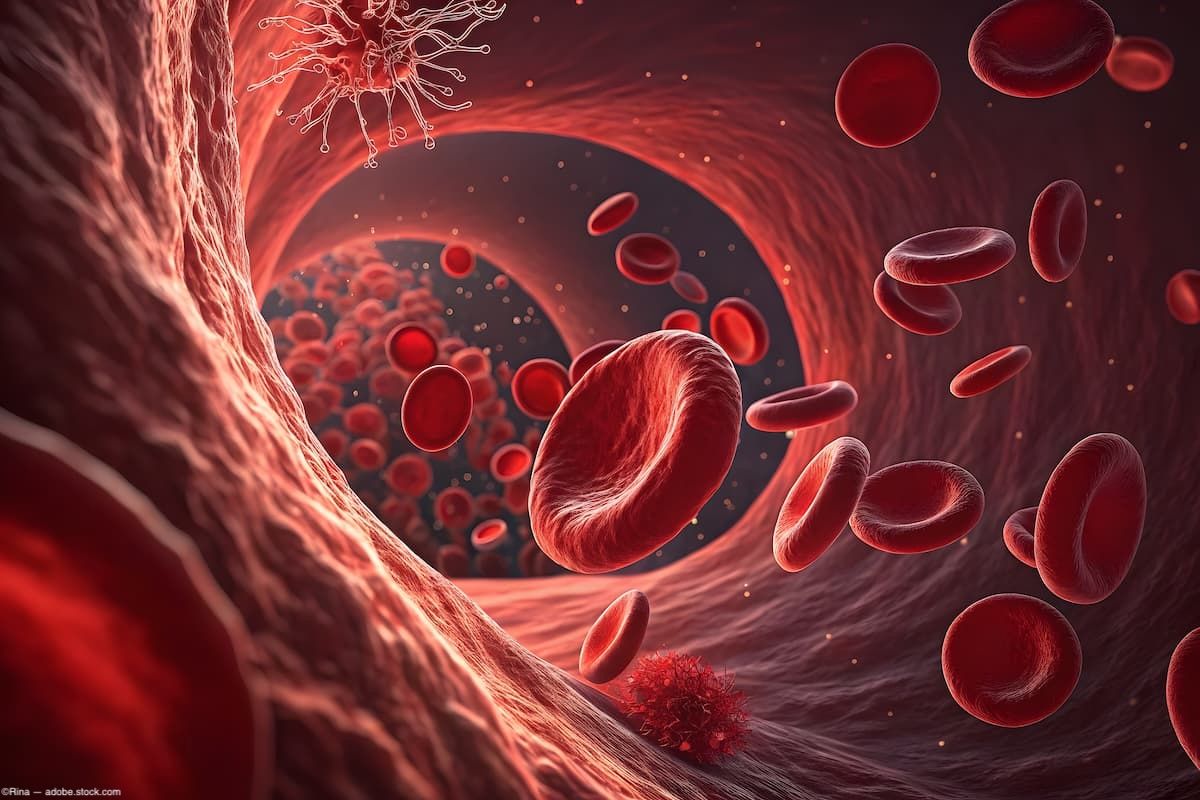News
Article
Results of phase 2 clinical SAGA study of oral gildeuretinol for GA presented at ARVO 2025
Author(s):
Key Takeaways
- Gildeuretinol in the SAGA study showed a 13.4% reduction in GA growth rate over 24 months, with significant visual function improvements.
- The safety profile of gildeuretinol was favorable, with no reports of delayed dark adaptation, chromatopsia, or vasculitis.
Alkeus Pharmaceuticals reveals promising Phase 2 SAGA study results, showing gildeuretinol slows vision decline in geographic atrophy linked to AMD.
(Image credit: AdobeStock/James Thew)

Alkeus Pharmaceuticals, Inc., announced additional data from its Phase 2 clinical SAGA study in geographic atrophy (GA) secondary to age-related macular degeneration (AMD). In this trial patients received oral gildeuretinol and results showed a slower decline in VFQ-25 (vision-related quality of life) and FRI (functional reading independence) index scores compared to placebo at month 24. These data were presented at the 2025 ARVO meeting held in Salt Lake City, Utah.1
Seemi Khan, MD, MPH, MBA, Chief Medical Officer of Alkeus Pharmaceuticals is quoted in the company’s press release1 on this news, saying, “We are pleased with these results from the SAGA study which showed that gildeuretinol provides meaningful functional benefits to people living with GA. GA secondary to AMD and Stargardt disease share a common pathophysiology, the accumulation of vitamin A dimers that are toxic to the retina. Importantly, these data, along with the positive results reported from our TEASE clinical program evaluating gildeuretinol for Stargardt disease, provide additional clinical evidence supporting the unique mechanism of gildeuretinol.”
The SAGA study is a a placebo-controlled, double masked phase 2 study of gildeuretinol in GA secondary to AMD. The candidate, gildeuretinol, showed a clinically meaningful trend in slowing GA growth rate of 13.4% from 0 to 24 months (p=0.075), which was the study’s primary endpoint. In a sensitivity analysis, gildeuretinol showed a statistically significant reduction in the GA lesion growth rate of 15.3% vs. placebo from 6 to 24 months (p=0.047). There was also a statistically significant visual function improvement, showing 4.4 fewer letters lost (p=0.031) in low luminance visual acuity (LLVA) over 24 months; this was the first key secondary endpoint. A trend toward functional benefit in best corrected visual acuity (BCVA) was demonstrated at 24 months with 3.3 fewer letters lost (p=0.099), which was also a key secondary endpoint.1
Notably, the majority of adverse events were mild or moderate. The safety profile demonstrated no reports of delayed dark adaptation, chromatopsia, or vasculitis.1
While the SAGA study was evaluating the candidate as a potential treatment for GA, it is also currently being evaluated for its potential as a treatment in patients with Stargardt disease. Data from the TEASE-1 study study showed daily oral gildeuretinol significantly slowed the growth of atrophic retinal lesions in Stargardt disease by a 21.6% reduction versus the untreated group (p<0.001). This effect was maintained across all pre-specified sensitivity analyses. Gildeuretinol was well tolerated and demonstrated a consistent safety profile across all studies to date.1
Modern Retina previously covered news of the SAGA study2 that were presented at the AAO meeting in 2024 and TEASE study in an interview with Christine N. Kay, MD, an expert in inherited retinal diseases.3
Reference:
Alkeus Pharmaceuticals Presents Gildeuretinol Data During the Association for Research in Vision and Ophthalmology (ARVO) 2025 Annual Meeting May 4-8, 2025. May 7, 2025. Accessed May 8, 2025. https://www.globenewswire.com/news-release/2025/05/07/3076162/0/en/Alkeus-Pharmaceuticals-Presents-Gildeuretinol-Data-During-the-Association-for-Research-in-Vision-and-Ophthalmology-ARVO-2025-Annual-Meeting-May-4-8-2025.html
Crago, SM. What you missed at AAO 2024: Gildeuretinol acetate (ALK-001). November 26, 2024. Accessed May 8, 2025. https://www.modernretina.com/view/what-you-missed-at-aao-2024-gildeuretinol-acetate-alk-001-
Kay, CN. AAO 2024: Deuterated vitamin A preserves vision in Stargardt disease. October 20, 2024. Accessed May 8, 2025. https://www.modernretina.com/view/aao-2024-deuterated-vitamin-a-preserves-vision-in-stargardt-disease
Newsletter
Don’t miss out—get Ophthalmology Times updates on the latest clinical advancements and expert interviews, straight to your inbox.




